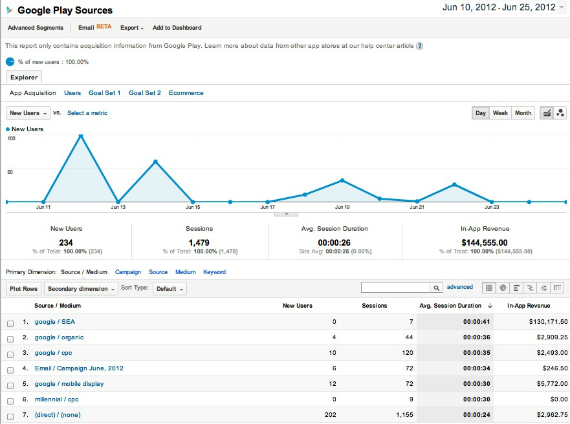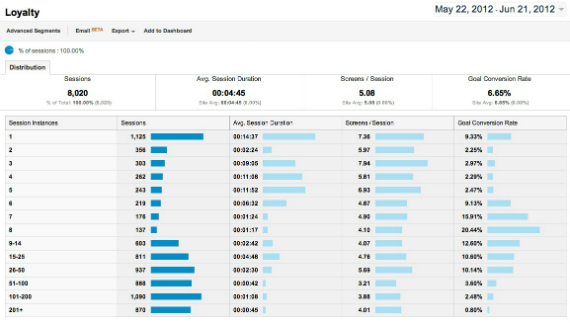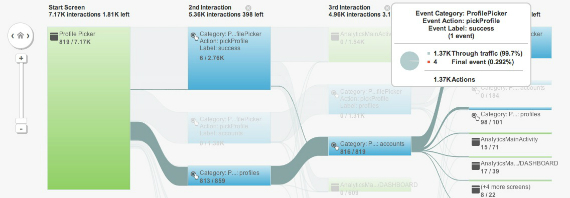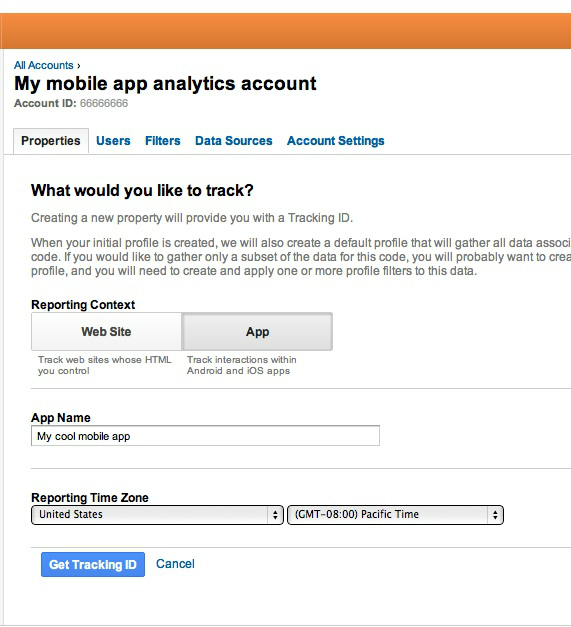Google Analytics Goes Mobile – Launches App Analytics
The Google Analytics team announced at Google I/O a new App Analytics functionality, to be added to the current Google Analytics offering over the coming weeks. Google already offers mobile SDKs for Android and for iOS, but until now they provided the same reports and metrics as the standard Web Analytics. In the new functionality […]
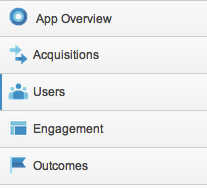 The Google Analytics team announced at Google I/O a new App Analytics functionality, to be added to the current Google Analytics offering over the coming weeks. Google already offers mobile SDKs for Android and for iOS, but until now they provided the same reports and metrics as the standard Web Analytics.
The Google Analytics team announced at Google I/O a new App Analytics functionality, to be added to the current Google Analytics offering over the coming weeks. Google already offers mobile SDKs for Android and for iOS, but until now they provided the same reports and metrics as the standard Web Analytics.
In the new functionality Google adapted its whole mobile solution to the App experience, providing additional reports and metrics for App owners and developers. In addition, they adjusted the registration flow to make it more streamlined for App developers. “Our goal with the new Mobile App Analytics reports is to help marketers and developers measure the end-to-end value of their mobile app, to ultimately help them build richer, more engaging experiences for their users.” Said JiaJing Wang, Product Manager at Google, explaining the reasoning behind the new functionality.
According to a recent article, mobile search traffic is on the rise, showing increases across different industries and website types. Google Analytics confirmed this trend with the following statement: “mobile now accounts for 8% of all conversions that we’re seeing in Google Analytics, and mobile conversions have grown by about 180% in just the last year.” All the above, and other mobile launches by Google, reinforce the company’s drive to improve the Mobile experience across the web.
Google will open the App Analytics beta to whitelisted users in waves, so if you are interested complete this beta signup form. According to the launch post, the reports will be available to all Google Analytics users by the end of the summer.
Mobile App Analytics
According to Google, the new Mobile App Analytics functionality is “designed to measure the entire mobile customer journey – from discovery to download to engagement. This enables the creation of app experiences that are more useful and engaging through data-driven decisions at each stage of the app lifecycle:
- Acquisition and user metrics such as downloads and new users
- Engagement metrics such as retention, crashes and conversions
- Outcome metrics such as app sales and in-app purchases
The following reports will be available through the new reports, but note that the new reports will be available to Apps using the new SDK v2.0.
New and active users: shows the number of new and active users who launch the app everyday.
Google Play traffic sources: shows where visitors come from to the Google Play. This supports Google Analytics campaign tags. This means that if you send traffic to Google Play and tag your links, you will see this information in this report. If you are using Admob, Ad information will be automatically populated.
App versions: shows the distribution of active users over the older and newer versions of apps (similar to screenshot below on App crashes). This report gives an overview of which App versions are still being used and how frequently.
Device overview: shows the top mobile devices and OS versions that apps runs on. Important to understand which mobile devices should be prioritized for QA and future development.
User behavior: shows how loyal your users are, how frequently they use the app, and the engagement level of each loyalty group. This new visualization is very interesting and useful, it shows in a glance how loyal are your visitors and how they engage with the App.
Engagement flow: shows the screens and paths users take to move throughout apps. This feature has being upgraded for the App Analytics. As Google Analytics users will note, there are additional colors; the colors represent different types of interactions. As an example, a screen view would be different than a click of a button. Very similar to how we see Page Views and Events on the Web.
App crashes: shows trends in crashes and exceptions that will help developers troubleshoot problems on certain devices, operating systems, and App versions.
Goal conversions: shows conversion events defines as goals for apps.
In-App purchases: shows the number of purchases and the revenue generated for in-app purchases. Unfortunately, even though Admob is currently integrated for Advertisers (i.e. they can see traffic coming as a result of their ads), it is still not integrated for publishers (i.e. a website showing ads on their mobile App cannot know when an ad was clicked and set them as goals).
New Registration Flow
As we can see in the screenshot below, the new signup page for Google Analytics has a clear differentiation between users who need the tool for Apps and users who need them for mobile applications.
Closing Thoughts
Mr. Wang defined the objective of this new feature as follows: “in order for marketers to truly measure their app effectively, they need to examine the entire lifecycle of the app, from acquisition (like new and active users or acquisition channels) to engagement (like top screens and user loyalty) to outcomes (like in-app purchases or goal conversions). More importantly, it’s crucial to see these areas in concert with one another, like how certain acquisition channels lead to better user engagement and ultimately more goal conversions.”
In summary, this a major change in the Google Analytics offering. Basically, what Google is saying is that the Web is as important as mobile for them. This is another step following Webmaster Tools official recommendation for mobile SEO and Google’s Mobile Planet: Global Smartphone Users research. Now marketers will have a more complete tool set to optimize mobile experiences which, hopefully, will improve the current state of mobile.
Contributing authors are invited to create content for MarTech and are chosen for their expertise and contribution to the martech community. Our contributors work under the oversight of the editorial staff and contributions are checked for quality and relevance to our readers. The opinions they express are their own.
Related stories

